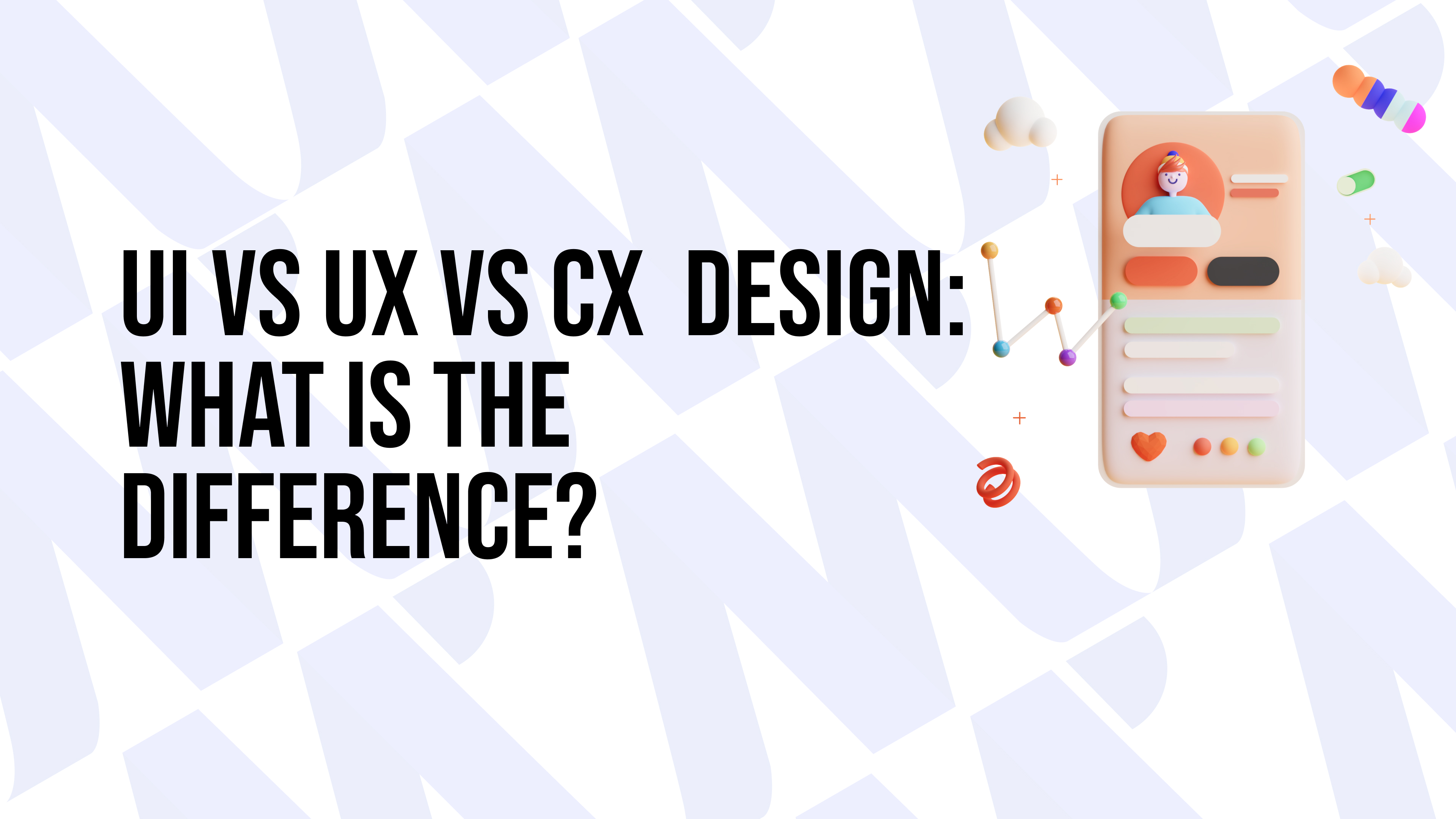The glossary of digital marketing is often hard to understand. Concepts overlap which creates confusion not only among outsiders and novices but also among professionals. One such example is the concepts of UI (user interface), UX (user experience), and CX (customer experience). These terms are often used interchangeably although they mean different things. But then they are all part of each other and don’t work as well independently. This can get pretty annoying pretty quickly.
In this blog, we will look at each of these terms individually, how they are different from each other, how they are similar, and how they work together.
What is User Interface (UI)?
Good customer experience is at the forefront of a successful business and design. A business/company will only grow its customers and keep them if it can provide a good interface that customers can interact with. In terms of web and application design, this is called User Interface Design. It is a purely digital practice.
A UI design is all the visual and interactive elements included in a design. And UI designers create the look and feel of an application’s user interface. When you look at the job descriptions of a UI designer, you will find requirements like graphic design, branding design, and even front-end development. This is not wrong at all, but UI design encompasses more aspects of application design.

A UI designer works with developers, content writers, market researchers, and UX (user experience) designers to create an attractive, intuitive, responsive, and smooth user interface. They handle all the ways a business design can attract more customers and keep them coming back to interact with their product and services.
One of the best examples of a UI is the checkout process in a website. The UI involves all the fields the customer fills in and the buttons they click. Similarly, the shelves where goods are placed in a store, the physical shopping cart a customer uses, and the checkout process are all user interfaces too.
These are all the things that a user uses to interact with the products and services provided by a brand during their particular journey; checking out.
Read: What Is User Interface (UI) Design?
What is User Experience (UX)?
User experience, on the other hand, refers to the overall journey of a customer with a brand. UI is one important part of UX.
Don Norman, the co-founder of the Nielsen Norman Group coined the term ‘user experience’ in the 1990s. According to him, “user experience encompasses all aspects of the end-users interaction with the company, its services, and its products.” This definition doesn’t include anything to consider UX as digital. But, over time, the concept of UX has become more and more digital.

UX includes creating an overall smooth and pleasant journey of interacting with a brand for users. It may include a single or multiple interfaces used at different parts of that journey. This journey can involve a user visiting a website, browsing through their catalogue, adding items to the cart, and processing the checkout. And once they place an order, the confirmation of the order, the delivery, and customer service are all parts of the user experience.
To consider a physical store as an example, the user experience involves how easy it was to locate the store, park their vehicles, the layout of the products, front-desk services, interaction with the staff and helpers, and the checkout process. It can go further with how easy a return process is.
An in-store experience can be different from an online experience. So, a user can have multiple experiences with a brand with each experience involving multiple UIs. The sole focus of UX is to optimize a product and services to satisfy customers’ expectations and satisfaction.
Read: What Is User Experience (UX) Design?
What is Customer Experience (CX)?
A user can have multiple experiences with a brand driven by multiple interfaces. Keeping this in mind, a customer experience is cumulative of all these, across all channels where they interact with brands; for instance, online shopping and in-store shopping experiences, shipping and delivery experiences, customer service, etc.
It is similar to user experience in most ways except that UX focuses more on customers’ satisfaction with a product or service and CX oversees their overall experience. It focuses on more customer-centric design.
If a customer buys multiple products from a store at different times and at different interfaces, all these journeys will give them different experiences. Combined, they are called customer experience (CX).
Read: What Is Customer Experience (CX) Design?
Notes:
- UI focuses on the efficiency and effectiveness of a brand design.
- UX focuses on making the products and services desirable, valuable, findable, accessible, and credible.
- And CX creates awareness, attraction, advocacy, discovery and builds up trust and loyalty.
How Do They Work Together?
Even though UI, UX, and CX have different scopes and implications, they work closely together to form a strong brand identity and reputation. Just one strong aspect and other subpar will not ensure a good experience for the users. A company that provides good UI, UX, CX will always have a one-up on their competitors.

Imagine, you want to place an order at a grocery store online. You visit their site and it is curated perfectly to meet the requirements of a large array of audiences, the shopping and checkout process is smooth, quick, and efficient. But the time comes when you receive the package and the delivery agent hurls your package over your fence. Would you go back to purchase from the store?
This is an example of a good UI but a god-awful CX. The overall customer experience will not meet the mark. On the flip side, you receive good customer service and guidance, but their website/app was the most annoying thing you ever dealt with. This would be an example of a good CX but a lousy UI/UX.
If you see where we’re going with this, you need to have a good UI, UX, and CX to flourish. Customers have the final say in the end. They determine whether or not you’re business stays standing on the marketplace. You cannot assure their good faith with any of them in a weak position.
Conclusion:
UI is all the access points where a customer directly interacts with the products and services of a business. Each interface gives customers a different experience with the business. UX encompasses all aspects in which a user interacts with a company’s products and services. A user’s experience of a business is determined by how they interact with it. Single UX can have multiple UI. Finally, CX is the sum of all the touchpoints at which a user interacts with a business and its products and services across different experiences.
To sum up, UI, UX, and CX are very closely related and need to work together to attract more customers and keep them. Good customer experience needs good user experiences, which require good user interfaces.

